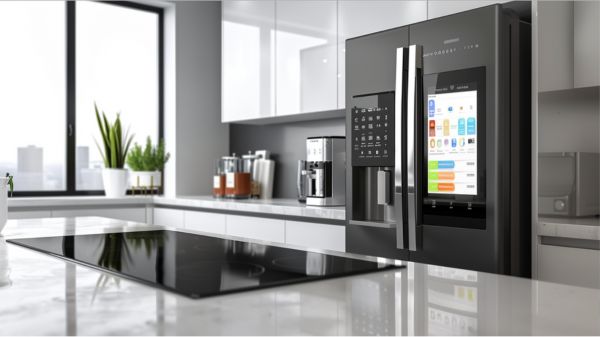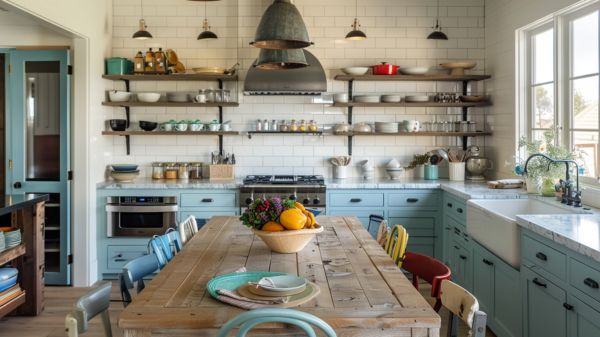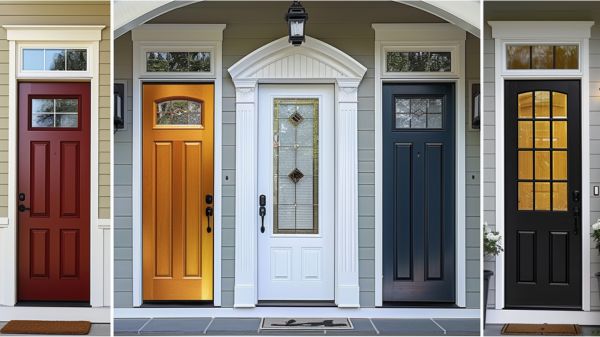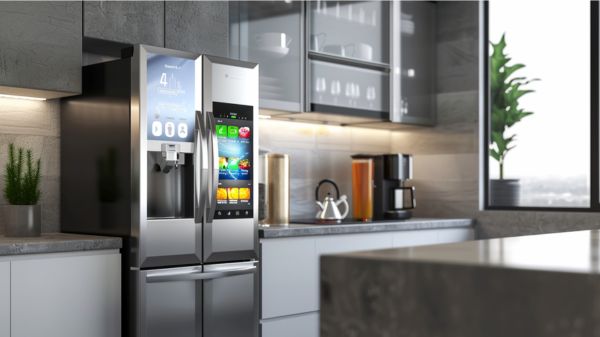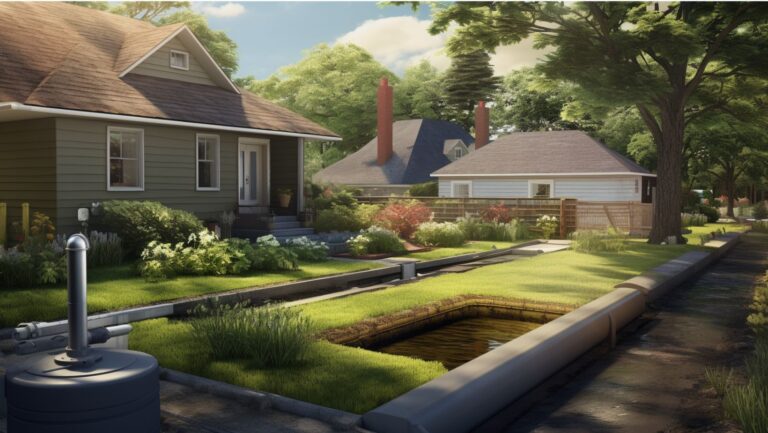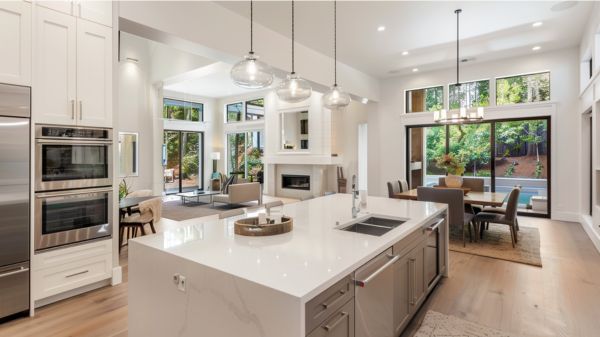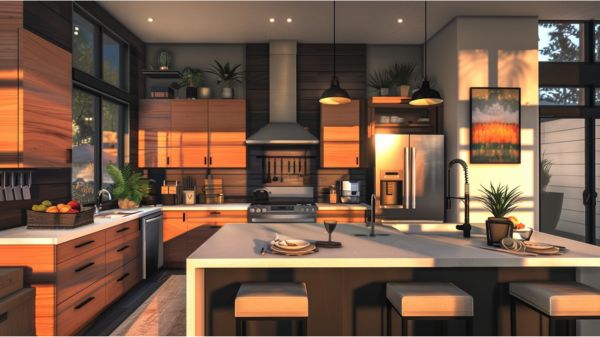Green Up Your Space: Eco-Friendly Kitchen Design Guide
Are you looking to design and transform your kitchen into a sustainable and eco-friendly space, but not sure where to start? Discover how simple design choices and mindful selections can make a significant impact on reducing your environmental footprint while creating a healthier living environment for you and your family.
By exploring sustainable materials, energy-efficient appliances, and innovative design solutions, you can take the first step towards a greener kitchen that embodies both style and sustainability.
Key Takeaways
- Choose sustainable materials like recycled glass and bamboo for eco-friendly kitchen design.
- Opt for energy-efficient appliances and lighting solutions to reduce energy consumption.
- Incorporate recycling and repurposing elements to minimize waste in kitchen design.
- Integrate natural lighting and green elements for a healthier and more sustainable kitchen environment.
Sustainable Materials for Kitchen Surfaces
Opt for recycled glass countertops for your kitchen surfaces, blending durability with eco-friendliness in a stylish and sustainable manner. These countertops not only add a modern flair to your kitchen design but also contribute to a healthier environment. By choosing recycled glass, you’re diverting waste from landfills and reducing the need for new raw materials, making it a truly environmentally conscious choice.
In addition to recycled glass, consider bamboo countertops for a sustainable option that grows rapidly and is highly renewable. Bamboo is a durable material that adds a touch of natural elegance to your kitchen while reducing your carbon footprint.
For a low-maintenance alternative, quartz countertops made from natural stone and resin are a sleek and stylish choice that will stand the test of time. These materials offer a perfect blend of sustainability and design, allowing you to create a green kitchen space that reflects your eco-conscious values.
Energy-Efficient Appliances and Lighting
Enhance your kitchen’s eco-friendliness with energy-efficient appliances and lighting choices that prioritize sustainability and innovation.
When considering energy-efficient options, look for the ENERGY STAR label on appliances to reduce energy consumption significantly. LED bulbs are a bright choice, using 75% less energy than traditional incandescent bulbs, contributing to overall energy efficiency.
Installing sensors or dimmers can lead to additional energy savings by automatically adjusting lighting levels based on your needs, optimizing energy usage throughout the day. Furthermore, harnessing natural light can reduce the reliance on artificial lighting during daylight hours, further enhancing energy efficiency in your kitchen space.
Related Post: Slash Your Energy Bill With These Efficient Appliances.
Recycling and Repurposing in Design
Repurposing and recycling materials in kitchen design not only adds a unique and eco-friendly touch but also contributes to sustainable practices, reducing environmental impact.
Embrace reclaimed wood for your kitchen cabinets to reduce waste while infusing a rustic charm into your space. Opt for countertops made from recycled glass bottles, offering a one-of-a-kind eco-friendly element to your kitchen.
By choosing decor items crafted from repurposed materials, you actively support sustainable practices and minimize your environmental footprint. Consider refurbishing old furniture for kitchen use to promote sustainability by extending the lifespan of these items.
Incorporating repurposed materials in your kitchen design not only reduces the demand for new resources but also lessens environmental strain, making your kitchen a beacon of sustainable design. Join the movement to reduce waste and enhance your kitchen with these innovative and eco-conscious practices.
Incorporating Natural Elements for Lighting
To infuse your kitchen with a sustainable and innovative ambiance, maximize the use of natural light through strategic window placement and skylights. Embrace the following tips to create a well-lit space while minimizing energy consumption:
- Utilize Tubular Daylighting Systems: Consider installing tubular daylighting systems to channel natural light into darker corners of your kitchen, reducing the need for additional artificial lighting. This sustainable design choice not only brightens up your space but also contributes to lower energy usage.
- Pair Natural Light with Energy-Efficient LED Bulbs: Enhance the natural light in your kitchen by complementing it with energy-efficient LED bulbs. This combination not only ensures your space remains well-lit but also promotes eco-friendly practices, aligning with a sustainable lifestyle.
- Strive for a Balance of Natural and Artificial Lighting: Achieve the perfect ambiance by striking a balance between natural light and artificial lighting sources. By blending these elements harmoniously, you can create an eco-conscious environment that’s both inviting and energy-efficient.
Related Post: Slash Your Electricity Bills With Energy-Saving Lighting.
Benefits of Indoor Plants in Kitchens
Introducing indoor plants into your kitchen not only enhances the aesthetic appeal but also promotes a healthier and more vibrant living environment. Indoor plants such as succulents and cacti play a vital role in improving air quality by reducing toxins and pollutants present in the kitchen.
These plants act as natural air purifiers, absorbing harmful substances emitted during cooking activities, thus contributing to a fresher indoor atmosphere. Moreover, through the process of photosynthesis, plants release oxygen, further enhancing the overall air quality in your kitchen.
Beyond the environmental benefits, the presence of indoor plants can have a significant impact on your well-being. They not only create a calming atmosphere but also boost your mood and productivity levels.
By incorporating these green elements into your kitchen design, you bring in a natural touch that transcends mere aesthetics, offering a sanctuary of liberation and sustainability.
| Air Quality | Mood Boost | Well-being |
|---|---|---|
| Toxins Reduction | Enhanced Productivity | Calming Atmosphere |
Conclusion
As you bring together sustainable materials and energy-efficient appliances in your eco-friendly kitchen design, you’re not just creating a stylish space – you’re making a positive impact on the environment.
By incorporating natural elements like indoor plants and embracing recycling and repurposing in your design, you can enjoy a healthier lifestyle while reducing your carbon footprint. Make your kitchen a beacon of sustainability and innovation, where every choice reflects your commitment to a greener future.
